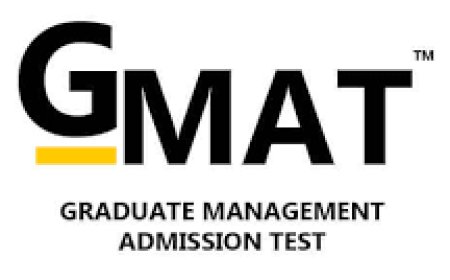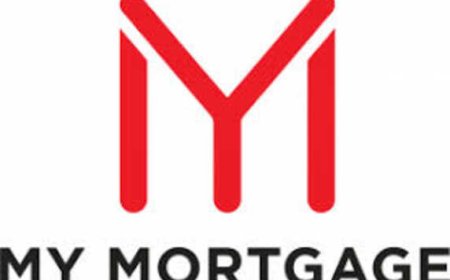Communication Methods for Online Academic Collaboration
Take, My, Class, Online

With the rapid expansion of online education and virtual learning environments, academic collaboration has transcended physical classrooms and embraced digital platforms. From group projects and peer reviews to tutor-student interactions and facultytake my class for me online, communication is now primarily conducted online. While this shift offers incredible flexibility and accessibility, it also raises critical concerns about privacy, data security, and the integrity of academic work.
Ensuring secure communication during online academic collaboration is vital for protecting sensitive information, maintaining academic integrity, and fostering trust among participants. This article explores the importance of secure communication in academic settings, identifies common security challenges, and outlines effective methods and best practices for safeguarding online academic interactions.
The Importance of Secure Communication in Academic Collaboration
Academic collaboration involves exchanging a wide range of information: personal data, intellectual property, research findings, and confidential feedback. Compromising the security of these exchanges can lead to significant consequences, including:
-
Data Breaches: Exposure of personal information such as student records, grades, and contact details.
-
Academic Dishonesty: Unauthorized sharing or tampering with assignments, exams, or research.
-
Intellectual Property Theft: Loss or misuse of original research, theses, or publications.
-
Reputational Damage: Loss of trust in academic institutions or collaborative groups due to security failures.
-
Legal Implications: Non-compliance with data protection regulations like GDPR, FERPA, or HIPAA.
Secure communication methods protect all participants and preserve the integrity of the academic process, enabling learners and educators to collaborate confidently.
Common Security Challenges in Online Academic Communication
Before delving into secure methods, it is essential to understand the common security challenges faced in online academic collaboration:
1. Phishing and Social Engineering
Malicious actors may impersonate instructors or peers to gain access to accounts or confidential information.
2. Unsecured Networks
Collaborating over public Wi-Fi or unsecured internet connections exposes data to interception.
3. Inadequate Encryption
Communication without encryption can be easily intercepted or monitored by unauthorized parties.
4. Weak Authentication
Simple passwords or lack of multi-factor authentication increase the risk of unauthorized access.
5. Data Leakage
Unintentional sharing of sensitive files or messages to unintended recipients.
6. Malware and Ransomware
Malicious software can disrupt collaboration tools, corrupt files, or lock users out of accounts.
7. Platform Vulnerabilities
Using unsecured or untrusted platforms may expose data to breaches or leaks.
Essential Features of Secure Communication Tools
When selecting communication tools for academic collaboration, the following features are crucial for security:
-
End-to-End Encryption (E2EE): Ensures only intended recipients can access the message content.
-
Multi-Factor Authentication (MFA): Adds extra security by requiring additional verification beyond passwords.
-
Access Controls: Limits access based on roles or permissions within the collaboration group.
-
Secure File Sharing: Protects files during transfer and storage.
-
Audit Logs: Records user activity for accountability and traceability.
-
Regular Security Updates: Patches vulnerabilities promptly.
-
Data Privacy Compliance: Adheres to relevant data protection laws.
Secure Communication Methods for Online Academic Collaboration
Here are the most effective secure communication methods tailored for academic collaboration:
1. Encrypted Messaging Platforms
Encrypted messaging apps provide privacy for text, voice, and video communication by encrypting data from sender to receiver.
-
Examples: Signal, WhatsApp (with caveats), Wire, and Threema.
-
Benefits: Protects sensitive discussions such as peer reviews, group project brainstorming, and feedback.
-
Considerations: Ensure that the chosen platform offers true end-to-end encryption and does not store messages on servers unencrypted.
2. Secure Video Conferencing Tools
Video meetings are integral to real-time academic collaboration. Using secure video conferencing platforms safeguards live discussions.
-
Examples: Zoom (with E2EE enabled), Microsoft Teams, Cisco Webex, and Google Meet.
-
Security Tips: Always enable meeting passwords, use waiting rooms, and control screen sharing permissions to prevent unauthorized access or "Zoombombing."
3. Virtual Private Networks (VPNs)
VPNs encrypt internet traffic and mask users IP addresses, providing a secure tunnel for online activities.
-
Use Case: Students and educators accessing collaboration tools over public or nurs fpx 4005 assessment 2 Wi-Fi networks.
-
Benefits: Protects data from interception and ensures anonymity.
4. Secure File Sharing Services
Sharing documents, research data, and assignments securely is critical to prevent leaks or unauthorized modifications.
-
Examples: Google Drive with 2FA, Dropbox Business, Microsoft OneDrive for Business, and Box.
-
Best Practices: Use platforms that offer encrypted file transfer and storage, restrict access permissions, and enable audit trails.
5. Password Managers
Managing strong, unique passwords across multiple academic platforms is essential.
-
Examples: LastPass, 1Password, Bitwarden.
-
Benefit: Prevents weak or reused passwords, reducing the risk of account compromise.
6. Multi-Factor Authentication (MFA)
Adding MFA significantly enhances security by requiring a second verification factor (e.g., a code sent to a mobile device) when logging in.
-
Implementation: Enable MFA on all academic platforms, email accounts, and communication tools.
7. Digital Signatures and Document Verification
Ensuring the authenticity of shared documents prevents tampering and verifies authorship.
-
Tools: Adobe Sign, DocuSign.
-
Use Case: Submitting official academic documents, collaboration agreements, or research approvals.
8. Secure Collaborative Platforms with Role-Based Access Control
Platforms that allow granular control over who can view, edit, or share content enhance security.
-
Examples: Microsoft Teams, Slack with enterprise security, Google Workspace.
-
Benefit: Limits access to sensitive data only to authorized group members.
Best Practices for Maintaining Secure Academic Communication
Technology alone cannot guarantee security; responsible practices are equally important.
1. Use Official Academic Platforms
Prefer institution-provided tools vetted for security over free or unknown third-party apps.
2. Regularly Update Software
Keep all collaboration tools and devices updated to protect against known vulnerabilities.
3. Verify Identities
Confirm the identity of collaborators through secure channels before sharing sensitive information.
4. Avoid Sharing Credentials
Never share login details with others; each user should have their own account.
5. Be Wary of Suspicious Links and Attachments
Phishing attacks are common; verify links and attachments before clicking or downloading.
6. Backup Important Data
Regular backups prevent data loss due to malware or accidental deletion.
7. Use Strong Passwords and Enable MFA
Create complex passwords and add multi-factor authentication on all accounts.
8. Educate Collaborators
Ensure all participants understand security risks and best practices.
Real-World Examples of Secure Academic Collaboration
Case 1: University Research Group
A university research team collaborates on sensitive data across multiple countries. They use a VPN combined with Microsoft Teams, which enforces MFA and encrypted file sharing. Meeting recordings and chat histories are saved securely, with access limited to team members only. This setup protects intellectual property and complies with international data protection laws.
Case 2: Online Course Peer Groups
Students enrolled in an online course form study groups via Zoom for live sessions, supplemented by Signal for encrypted messaging. They use Google Drive with restricted access for sharing notes and assignments, and maintain strong passwords via a shared password manager. Their approach balances convenience with robust security.
Emerging Technologies Enhancing Secure Academic Collaboration
Blockchain for Data Integrity
Blockchain can provide immutable records of academic submissions and collaborations, reducing fraud and unauthorized alterations.
Artificial Intelligence for Threat Detection
AI-driven tools monitor communication platforms for unusual activities, flagging potential security breaches in real-time.
Zero Trust Security Models
This approach assumes no user or device is automatically trusted and requires verification at every step, enhancing collaboration security.
Conclusion
As online academic collaboration becomes increasingly central to education, ensuring secure communication is paramount. Adopting encrypted messaging, secure video conferencing, VPNs, robust file-sharing nurs fpx 4065 assessment 3, and multi-factor authentication creates a safe environment for exchanging ideas, submitting work, and fostering academic growth.
Coupled with best practices like using strong passwords, verifying identities, and educating participants about risks, these secure communication methods help protect privacy, uphold academic integrity, and build trust among collaborators. Institutions, educators, and students alike must prioritize security to fully leverage the benefits of online academic collaboration without compromising safety.





















